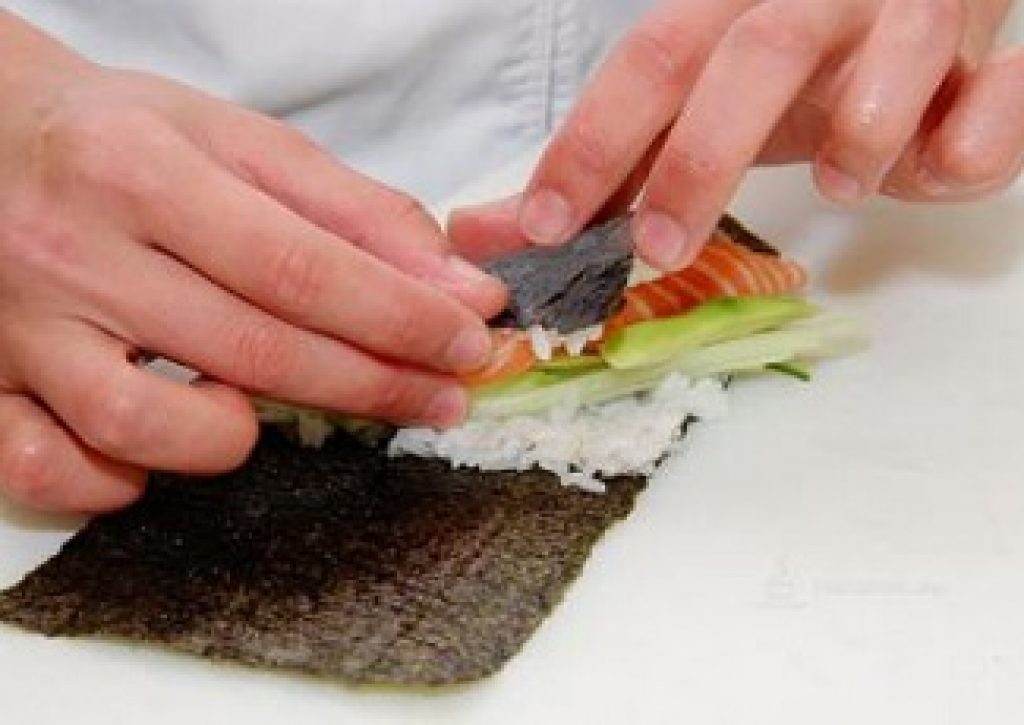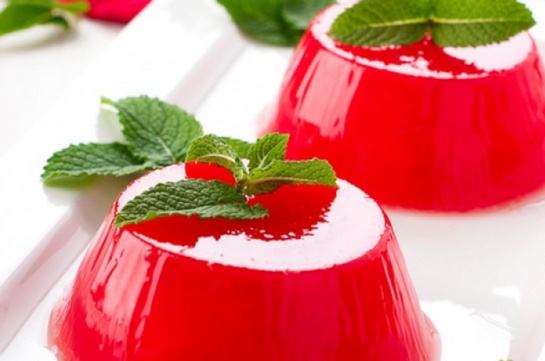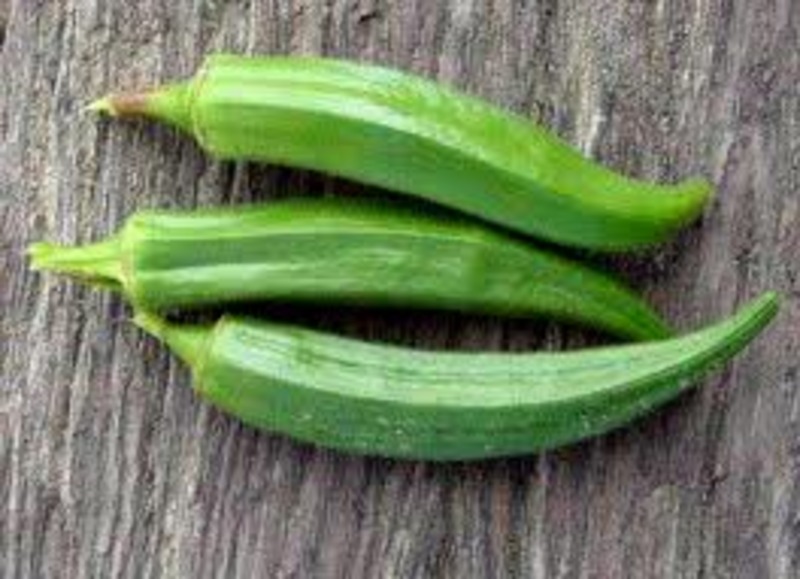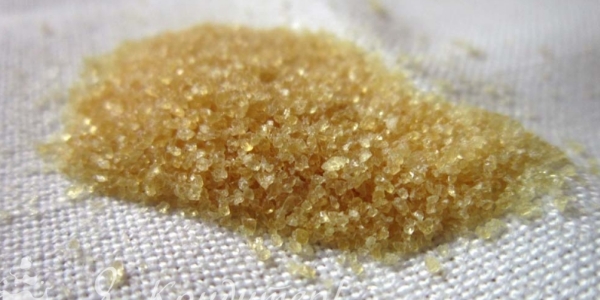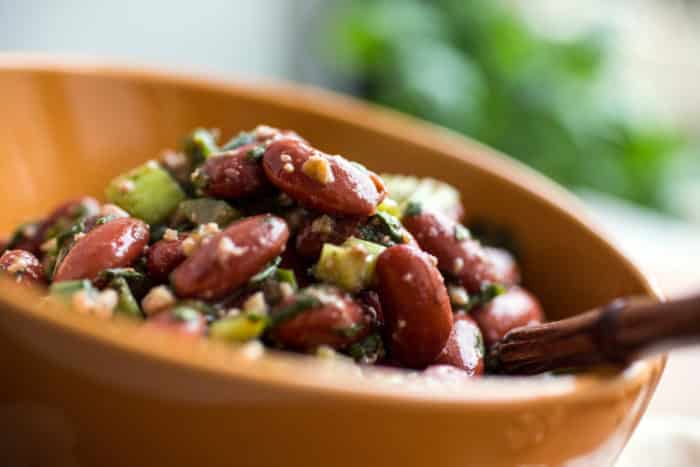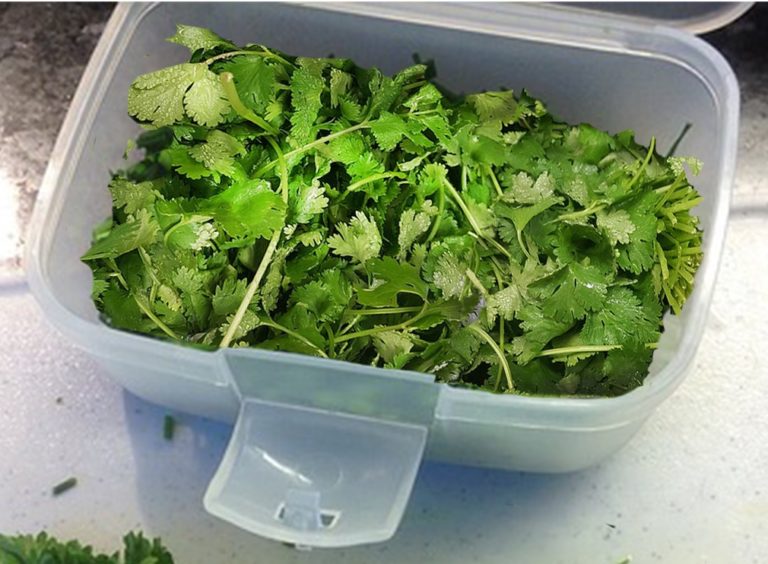We keep vitamins in the refrigerator - there are several ways to always have fresh herbs on hand. Greens: secrets of long-term storage
Before storage, herbs must be prepared. The main preparatory stages:
- Sort and delete marriage. After you come home, sort through the greens:
- untie the bunches with plants;
- carefully review each leaf for yellowness, dry branches, insects. They need to be removed from the green.
- The stage of cleaning from dust and germs involves washing the greens. Rinse the spice under running water, or soak it in a container. If you wash in a bowl, then change the water several times to remove all impurities.
- Drying. Shake water from greens. Put paper or waffle towels on the table. Spread wet leaves, leave them until the liquid has completely drained. To fix the effect, blot the greens with a towel on top.
- The room in the package. Complete the preparation of fresh spices by sorting and unfolding in the package.
How to keep greens fresh in the refrigerator
Each type of green plant requires specific storage conditions. On average, the freshness of greens can be extended for 1-3 weeks. It all depends on compliance with the rules of preservation of spices.
How to store parsley in a refrigerator

Keeping parsley in its original form is a difficult task. After all, it begins to fade in the first hours after collection from the garden. What can we say about storage in the refrigerator. So that it does not fade, you need to artificially saturate it with moisture.
- Collect the parsley into a bunch.
- Fill a small plastic glass with half the water. Place the parsley stalks in it.
- Put a plastic bag on top of the leaves. Place the packed parsley down the refrigerator where the temperature is acceptable for storage.
Helpful advice!
Change the water in a glass every day, and then parsley can stand for 30-50 days.
Storing green onions in a refrigerator

Chives are the most common spice to use. It can be stored for up to 60 days if you maintain an air temperature of 0 ° C. At 2-4 ° C. onions will be stored for up to one month.
There are several savings options:
- Put unwashed onions in a plastic bag, tightly closing it or tying it. Make 5-7 holes in it with a toothpick so that air enters there. Put the bag to other vegetables.
- Save the onion for 14-20 days will allow wrapping in kraft paper. Blot greens with a damp sponge to remove large particles of dirt. Put on kraft paper, spray cool water on top (use a spray bottle for convenience). Roll paper with a bow into a bundle, hide the ends inward. The resulting "cocoon" put in the refrigerator.
Storage of peppermint in a refrigerator

Mint is a fragile plant, even subject to all storage conditions, it will retain freshness for no more than 7-8 days. You can save it by wrapping it in a damp towel. First, sort out the mint, discard the blackened and yellowed leaves. You should not wash the plant before storage, so you will reduce its period. Put the selected leaves in a slightly moistened terry towel, place on the lower shelf of the refrigerator. Mint can be stored for longer than 7 days; it can only be frozen or dried.
Storage of spinach in a refrigerator

Spinach, like mint, quickly loses moisture and fades. It will be possible to save it for fresh consumption, observing all storage rules, one week. Squeeze purchased or cut spinach, fold all illiquid leaves. You do not need to immediately rinse them, do it just before cooking. Place the sorted greens in special food bags with prepared holes. Put in the refrigerator. To save spinach for six months, only freezing in the freezer will allow.
Storage of basil in a refrigerator

This fragrant grass should only be stored in the refrigerator. Long exposure to sunlight and high temperatures will quickly ruin it. Spice storage options:
- The first method will save basil for 7 days. Place greens in a container or plastic bag, put in storage in the refrigerator.
- The second method will keep the spice fresh for 2-4 months. Dig the basil bushes directly with the root system, shake off the adhering soil, rinse under a small stream of water. Fill a plastic cup halfway, place the roots of the plants so that they are covered with water. Change the water every day so as not to breed pathogenic bacteria.
Advice!
If you decide to freeze basil, then leave only the leaves. The fact is that the stem cells, under the influence of low temperature, lose their structure and turn into a mucous substance after defrosting.
Storage of sorrel in a refrigeration unit

Sorrel is kept in the refrigerator for a week. Rinse in water and dry dry. Place in a polyethylene packaging or container. Use a container with holes. Put the sorrel in the vegetable compartment.
Storage of dill in a refrigerator

Dill is stored in the refrigerator for 7-10 days. Rinse and dry a bunch of greens, take a cling film, wrap the dill in several skeins, put in a refrigerator.
Keeping lettuce leaves in the fridge

Salad leaves can be stored in the refrigeration unit for a month. Disassemble a head of fresh salad into sheets. Wrap each in plastic wrap, and then put it in a plastic container. Refrigerate away from other fruits and vegetables. Protect from excessive moisture so that lettuce does not become moldy.
Preservation of freshness of cilantro in a refrigeration unit

Delicate cilantro is used in small quantities. Extend its period of use:
- For one week. Take a plastic container, line the bottom with a dense tissue paper, put peeled cilantro, tightly close the lid. Place the container on the bottom shelf with the rest of the vegetables.
- For 2-2.5 weeks. Fill the cilantro with the leaves down and the stems up at the bottom of the half-liter jar. Boil a small amount of water, cool to + 3-4 ° C. Pour water into a jar to cover the leaves. Change the water every day.
Keeping arugula in the refrigerator

Shelf life of arugula in the refrigerator is small, only 4-5 days. Take freshly cut grass, sort it out, discard all sluggish and yellow leaves. Then, tie them into small bundles, and wrap the stems with cling film. Fold the resulting bundles in a plastic container.
Useful information!
Arugula is prone to absorb various odors. Store only in hermetically sealed containers and away from vegetables that emit pronounced aromas.
Preserving the freshness of celery in a refrigerator

You can save celery stalks in a refrigeration unit for 20-30 days. Take a thick plastic bag, put celery in it, place it at the bottom of the refrigerator with other vegetables. It is important that the collected or purchased petioles are juicy. If they are sluggish and flexible, then they will be stored for no more than one week.
Preserving the freshness of wild garlic in a refrigerator

Wild garlic is the most difficult spice in storage. No matter how you try to preserve its juiciness, pleasant appearance and taste longer, but it will not last longer than 4 days. Externally, wild garlic may not change if held for more than 4 days, but the taste and smell will be spoiled.
It must be stored in a refrigerator in a sealed airless bag. Do not wash before laying. Sort the leaves, put them in a plastic bag, release the air manually as much as possible, but if there is a vacuum machine, use it. Put to the rest of the vegetables.
Capacity for storing greens in the refrigerator
It is not recommended to place the spice without packaging. Firstly, in this form it will retain external and taste qualities for only 1-3 days, and secondly, plants will absorb the smell of other products that are in the refrigerator. Use as a storage container:

Advice!
To reduce the contact of plastic with green products, lay a paper towel on the bottom. Also, the paper absorbs excess moisture, which may appear during storage.
Spice Storage
Storage space determines the useful life of plants.
- The first place, in terms of the duration of greenery conservation, is occupied by the freezer. In it, green products retain their taste and healthy properties for 6 months. Plants should be washed and dried. Use plastic bags for storage.
- The second place is taken by the preservation of products in the refrigerator. Store the spice in the bottom of a cold cabinet where the temperature is optimal for vegetables. The freshness of plants will be 1-2 weeks.
- The third place is occupied by the kitchen cabinet. Place greens in a glass of water or wrap in a damp cloth. In this form, it will last 2-3 days.
How much to store greens in the refrigerator
| Green name | Shelf life in the refrigerator | Shelf life in the freezer |
In a container of water is stored or in a glass jar for up to 50-60 days; The package is 7 days. | In thick cellophane or cling film for six months. | |
With stems in water 20-50 days; In the container for up to two weeks. | Six months in a package of polyethylene. | |
| It is stored up to two weeks, regardless of packaging. | Six months, regardless of packaging. | |
| Mint, Melissa | A moistened towel stays fresh for one week. | Shelf life 4-5 months. |
| Green feather bow | With roots in water up to 3 weeks; In a moistened towel for up to 2 weeks. | 4-6 months. You need to freeze chopped onion slices, drenched in softened butter. |
| Storage in a package - one week. | Half a year. | |
| Storage in polyethylene packaging with holes is 5-6 days. | Half a year. | |
Two weeks if the stems are in the water; A week in a different package. | Six months in a plastic bag. |
Advice!
To preserve greens longer, you do not need to wash them before laying them.
The secrets of storing greens

- Storage in a vacuum container is the easiest way to store greens.
- To keep the spice in the refrigerator longer:
- put lettuce leaves immediately after you have purchased or cut them from the garden;
- wrap in wet kraft paper or a towel;
- do not put greens on the top shelves of the refrigerator.
- Remaining fresh greens in the refrigerator will help to maintain optimal temperature conditions, which should not exceed 0 + 3-5 ° С. Therefore, it must be put down for long-term storage down the refrigeration unit.
- In order not to provoke decay of the spice, be sure to sort it out before bookmarking. Discard spoiled leaves.
- The dry environment and the thermal regime of the refrigerator close to zero will not allow greens to fade.
- There are several ways to revive greenery, if it has slightly let down:
- fill half a deep bowl with cold water, put 10 ice cubes in it, put grafted greens for 5 minutes. After such a procedure, she should “quicken”;
- to return freshness to “drooping” parsley, cilantro, or dill will allow the soaking of the stems in water with the addition of vinegar. Fill a glass halfway with cold water, drip a few drops of nine percent vinegar. Put a bunch of spices in it. After a few hours, the greens are saturated with water and will return to their previous appearance.

Storage of greens in the refrigerator or in the freezer will help out at the most unexpected moment. Stock up on fresh spices for the future. Now you already know how to properly store it!
Dill, parsley, spinach, basil, cilantro - not the whole list of unusually useful leafy vegetables. Not everyone knows how to store greens so that it does not wilt soon. To make full use of the storehouse of vitamins and minerals, you need to know about the intricacies of saving sorrel, watercress, tarragon, etc. In which containers it is better to place the plants, how to store greens in the refrigerator and in other places, we will tell in our article.
Features of storing greens
Greens has one big drawback. Fragrant bunches of mint, parsley, dill spoil quickly, unless suitable conditions are created for them. The following factors affect the leaf freshness most negatively:
- Oxygen. For cut stems, it does not bear any benefit, on the contrary - storage in the open air leads to accelerated twisting and darkening of the leaves.
- Direct sunlight. If you bought greens, already on the road from the market, try to minimize the exposure of the sun to fresh leaves. Natural light acts destructively on the green shoots of delicate plants (cilantro, parsley, spinach) and leads to their accelerated yellowing.
- High or low humidity. In a too humid environment, greens quickly decay, and in dry water it quickly evaporates from plants, which leads to wilting.
Given the influence of these factors, you can keep the greens fresh and fragrant for a long time.

A refrigerator is considered the best place to store herbs, but most herbs can be saved and at room temperaturewithout freezing or cooling. But under such conditions, the expiration date will be no more than 3-4 days. First you should free the bundles from store packaging. If the greenery is torn from its own garden, it needs to be sorted out, cleaned of roots and lower leaves, and shake off the rest of the earth. Remember that you must not wash herbs that you plan to store.
Be sure to sort the greens by type and wrap each bunch in a piece of natural fabric or parchment. Put the finished packages in the kitchen cabinet. An exception to the rule is the storage of mint and basil. These herbs stand perfectly in a deep glass jar 2-3 cm filled with water. Store such a “bouquet” on the kitchen table, avoiding direct sunlight. Do not forget to change the water daily and cut the lower stems.

Storage in the refrigerator and freezer: what you need to know
How to keep greens in a refrigeratorto stay fresh is the eternal question of housewives of different generations. Herbs are best stored on the bottom shelf. Before placing there, leafy vegetables need to be peeled (remove yellowed leaves and soil debris), as well as carefully folded prepared twigs. We recommend wrapping herbs with a delicate fiber structure in a damp cloth.
To keep the greens fresh and appetizing, it is important to choose the right temperature. The optimal indicator for all types of herbs is 0 ℃, under such conditions they will lie 2 weeks. It is not recommended to keep greens in the refrigerator for longer than the specified period, as it will lose all its useful qualities.
The best container for storing greens in the refrigerator is considered vacuum container from high-quality food-grade plastic. On the market you can find a huge number of containers of different shapes and sizes, so there will be no problems with the choice. Before laying the blank in a ship, be sure to wash and dry it.

Greens are well kept in the refrigerator in a regular glass jar with a tightly closed lid. It is important to ensure that damaged leaves and roots do not get into the container, otherwise they will become rot spreaders. Often used for storage paper towelsin which greens are wrapped before being folded into the refrigerator. Make sure that wrapped leaves do not soak the paper. During storage in a plastic bag tighten it tightly to prevent oxygen from getting inside.
If you want to keep greens at home for the winter, they put it in the freezer. To save in the freezeryou can cilantro, parsley, dill, tarragon, celery, chives, spinach, sorrel. Before placing the herbs in the freezer compartment, rinse them well under running water, then dry them with a towel. Wrap each type of blank separately in a plastic bag or film, having previously released excess air, and put it on freeze.

If you plan to use greens in soups, pies, salads, then before freezing it is necessary chop. After thorough cleaning and drying, chop the leaves and stems with a knife or chop finely with scissors. Do not squeeze the greens during processing to preserve the juice in it. It is in the juicy part of the stems that contains the most useful substances and minerals. Soup herbs are conveniently frozen in ice tins. Fill each compartment with 2/3 greens, then fill the contents with water and send to freeze. To use the greens for other purposes, you can pack it in batches in small food containers or bags.

Few people know that cut greens lose Vitamin C in just a couple of hours. To prevent this from happening, and leafy vegetables remain useful for a long time, you need to know some tricks:
- the salad will remain green and fresh for 5-7 days if stored in cling film;
- parsley and dill immediately after purchase should be put in a container of water;
- before storing in the refrigerator, greens need to be wet from excess moisture;
- dill, mint and celery are best stored in small quantities, wrapped in foil;
- you can return the aroma of greenery by lowering it in warm water;
- if the herbs are planted, first dip them in hot water, and then immediately in cold;
- dried herbs are best suited for flavoring dishes due to their high concentration;
- parsley, cilantro and dill, even in the refrigerator, will not be able to maintain their useful qualities for longer than 3 weeks.

If the greens could not be prepared for storage immediately after purchase, you can wrap it in a waffle towel and send in the refrigerator to the shelf for vegetables. In this way, you can save it throughout the day without sacrificing quality.
Without vitamin green, it is impossible to imagine a complete human diet. If you do not have the opportunity to collect fresh herbs from your garden all year round, you should take care in advance about the rational storage of the product. Use our recommendations and enjoy the taste and aroma of your favorite seasonings, regardless of the season.
Video
Want to learn more secrets on how to store greens? See the following video.
He has considerable experience in gardening - from sowing seeds and seedlings to harvesting and storage. Each sowing season begins with a search for new ways of growing, because cucumbers can be collected not only from the garden, but also, for example, from ... barrels and even grown in the winter on the windowsill. Caring for plants is considered one of the best ways to relieve stress.
Found a mistake? Select the text with the mouse and press:
Ctrl + Enter
Do you know that:
A farmer from Oklahoma, Carl Burns, bred an unusual variety of colored corn, called Rainbow Corn ("rainbow"). The grains on each ear are of different colors and shades: brown, pink, purple, blue, green, etc. This result was achieved by many years of selection of the most colored ordinary varieties and their crossing.
“Frost-resistant” varieties of garden strawberries (often simply “strawberries”) also need shelter as ordinary varieties (especially in those regions where there are snowless winters or frosts alternating with thaws). All strawberries have superficial roots. This means that without shelter they freeze. Assurances of sellers that wild strawberries are “frost-resistant”, “winter-hardy”, “tolerates frosts up to −35 ℃”, etc., is a hoax. Gardeners must remember that no one has managed to change the root system of strawberries.
It is believed that some vegetables and fruits (cucumbers, stem celery, all varieties of cabbage, peppers, apples) have a "negative calorie content", that is, when digesting, more calories are consumed than they contain. In fact, in the digestive process, only 10-20% of the calories obtained with food are consumed.
Natural toxins are found in many plants; not an exception, and those grown in gardens and vegetable gardens. So, in the seeds of apples, apricots, peaches there is hydrocyanic (cyanide) acid, and in the tops and peel of unripe solanaceous (potatoes, eggplant, tomatoes) - solanine. But do not be afraid: their number is too small.
New to US developers is the Tertill robot, which weeds weeds in the garden. The device was invented under the guidance of John Downes (creator of the robot vacuum cleaner) and works autonomously in all weather conditions, moving on uneven surfaces on wheels. At the same time, he cuts all plants below 3 cm with a built-in trimmer.
Convenient Android applications have been developed to help gardeners and gardeners. First of all, it is sowing (lunar, flower, etc.) calendars, thematic magazines, collections of useful tips. With their help, you can choose a day favorable for planting each type of plant, determine the timing of their ripening and harvest in time.
In Australia, scientists began experiments on cloning several grape varieties that grow in cold regions. Climate warming, which is predicted for the next 50 years, will lead to their disappearance. Australian varieties have excellent characteristics for winemaking and are not susceptible to diseases common in Europe and America.
Humus - rotted manure or bird droppings. They prepare it this way: manure is piled up in a pile or pile, interbedded with sawdust, peat and garden soil. Burt is covered with a film to stabilize temperature and humidity (this is necessary to increase the activity of microorganisms). Fertilizer "ripens" within 2-5 years - depending on the external conditions and the composition of the feedstock. The output is a loose homogeneous mass with a pleasant smell of fresh earth.
Tomatoes have no natural protection against late blight. If late blight attacks, any tomatoes die (and potatoes too), no matter what is said in the description of varieties ("varieties resistant to late blight" is just a marketing ploy).
In the kitchen, a good housewife should always have fresh herbs. Its pleasant aroma energizes and inspires culinary creativity. Each dish with the addition of greens becomes more refined and vibrant in taste, acquires originality.
However, it is very important that the greens are fresh. Each housewife more than once found that by buying a large bunch of parsley or basil and just putting it in the refrigerator, after a while she could get out the green, yellowed, or even decayed greens. This is no longer suitable for cooking - it will only ruin the dish.

This is facilitated by several factors. Firstly, too much moisture on the leaves activates the process of decay of plants, while at least moisture will lead to their drying. If your greens turn yellow, it means that it received too much light, if the leaves turn brown - the reason is an excess of oxygen or an unacceptably low temperature for storage. The conclusion is simple: to keep the bundles of your favorite greens as long as possible, it is important to monitor the amount of light, moisture, oxygen and air temperature, observing the correct proportions.
If you follow the rules described in the article, greens will be stored in your refrigerator for at least three weeks, and possibly longer.

Rinse the bunches of green under running water at a cool temperature. Then shake the greens properly, spread a paper towel on the table and spread the washed plants on it. As soon as the moisture evaporates, greens can be sent for storage.
Depending on the structure and density of the stem and leaves, green herbs are divided into two categories: soft and hard. For example, cilantro, mint, dill, parsley, basil and tarragon are classified as soft. The hard category includes thyme, rosemary, sage and oregano.

Treat bunches of soft greens like a bouquet of fresh flowers. Fill a glass (or any other glass container) with cold water and place bunches of greenery there, after cutting off the ends of the stems. Place the container in the refrigerator, loosely covering the leaves with polyethylene. This will help plants retain the necessary moisture and at the same time protect them from oversaturation with oxygen. To preserve the freshness of greens, change the water in a glass every few days.
The storage method described above is suitable for all types of soft greens, except basil. In the refrigerator, this plant will very quickly darken even in polyethylene. Therefore, a glass of basil is best left on the kitchen table.

To ensure long-term preservation of rosemary and thyme, wrap the washed and dried herbs in a damp paper towel. Put it in a container or sealed bag - this will save plants from excessive oxygen.
Greens are extremely beneficial for our body. However, in order to feel its full benefit, you must know how to properly store it in the refrigerator. These simple tips will help you with this.
Method 1
Pour into a deep container of cold water and immerse greens in it. With washed greens, shake the water and place it on paper towels - you need to dry the greens as much as possible. Blot large drops of water with paper towels and let dry for about 15 minutes. Next, pack in a spacious container with a tight-fitting lid. Instead of a container, you can use a liter jar with a plastic lid.
Method 2
Rinse the greens, let the water drain and place in a plastic bag. Pack the maximum amount of air in the bag and tie it tightly. Store greens in the refrigerator on the bottom shelf.
Method 3
Rinse the greens, let the water drain, pat it with paper towels and wrap it in paper. Kraft paper or a thick paper towel is ideal - paper should not creep away from moisture.
Wrap clean greens in paper completely, sprinkle the bundle with water, put in a plastic bag and put in the refrigerator.
Method 4
For long-term storage, sort the greens, but do not wash. Fold in a plastic bag with 1-2 unpeeled and cut into four parts onions and tie. Store in a cool place. Important! Every 4-5 days, the contents must be removed, wipe the bag dry and change onions.
Method 5
Wrap fresh herbs in a waffle towel and put in the refrigerator.
Method 6
Green onions, celery, lettuce, spinach, parsley and dill can be stored in the refrigerator for a long enough time if dry. Sort the greens, dry on paper and put in a plastic bag, after making several holes for ventilation in it.
Method 7
Parsley and dill can be stored by placing it in a glass of water: cut the roots of fresh herbs, drop the stems into a jar of water, cover the leaves with a plastic bag or wrap with wet gauze. Water needs to be changed every two days.
Method 8
Lettuce leaves will stay fresh longer if placed on a plate, covered with a paper towel, and covered with cling film on top.
Method 9
In order to keep the green onion fresh, it is necessary to sort it out, moisten the roots with cold water, and leave the feathers dry. Wrap the roots with the bulb with wet gauze, wrap the paper on top and place in a plastic bag and put in the refrigerator.
Based on materials: bigmir.net, www.imhoweek.ru, eh-zhituha.ru
By the way
In order to properly need a pallet or baking sheet, parchment paper and bags for freezing.
Fresh herbs, as a rule, are a regular on the shelves of each refrigerator. It is believed that it is the cold that helps preserve the beneficial properties of greenery.
In order for this rule to work, you must adhere to the following recommendations:
- Before sending the greens for storage, it is desirable rinse. This is done not only for the convenience of further use, but also to allow the greens to "breathe". It can be left in water for up to 1 hour to allow it to be saturated with moisture and to maintain an attractive appearance for longer. However, you should not lower for a long time varieties that can lose their taste and become watery (for example, lettuce).
- If you are going to save herbs, you should not forget about the main rule: greens, dried out from moisture, is stored the longest. After washing, it is better to put the herbs on paper, which absorbs the rest of the water.
- Important to take care of tight-fitting containerwhere you can store greens. You should not resort to packages that are familiar to everyone: they let air through, which is why the greens lose useful properties in a couple of days and wither. Vacuum containers are ideal, in which even fresh herbs are easily stored for at least a week.
In addition, you can store fresh herbs in the refrigerator in glass jarby closing it with a lid. For lack of containers or cans, fresh herbs can be stored in the refrigerator, wrapping the roots with a paper towel or a soft cloth and sprinkled with water.
Unusual ways to store greens
 In order to save greens in a glass jar, experienced housewives resort to various tricks. For example, greenery can add a whole or half peeled onion. If the greens are stored in their entirety, water is sometimes poured into the jar and the roots are dropped there. In such conditions, it is necessary to cut the stems per centimeter daily and change the water.
In order to save greens in a glass jar, experienced housewives resort to various tricks. For example, greenery can add a whole or half peeled onion. If the greens are stored in their entirety, water is sometimes poured into the jar and the roots are dropped there. In such conditions, it is necessary to cut the stems per centimeter daily and change the water.
In order to preserve greens for a long time, it is better to dry and laid out in containers, jars or bags, send to the refrigerator or freezer. At the same time, greens can be stored either whole or in crushed form, in which it can immediately be sent to the dish. You can freeze fresh herbs; in this form, it can be eaten for more than one season.
Some housewives prefer to store greens on the kitchen table, dropping the stems into the water. However, under such conditions, many herbs with a large evaporation surface (parsley, celery, lettuce) wither before our eyes. Lemon mint and basil are well tolerated.
In this way, the best way to keep greens is to keep them chilled. In order for the greens to keep their freshness as long as possible, it is necessary to periodically check and sort out the bookmark, since different varieties of herbs have different storage periods.





